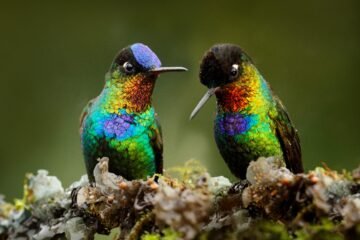
Aye-ayes are often misunderstood because of their unusual looks and nocturnal habits. With big eyes, long fingers, and a unique way of finding food, they revel in the night while most of us are cozy in bed. But just how do they manage to survive in such challenging environments? That’s what we’re going to explore. So grab your favorite mug, and let’s dive into the fascinating world of the aye-aye!
Understanding the Aye-Aye’s Habitat
First off, let’s talk about where aye-eyes live. These creatures are native to Madagascar, an island known for its stunning diversity, yet harsh climates and varied ecosystems. From rainforests bursting with life to dry regions with scarce vegetation, aye-eyes have adapted to make their homes in these places. They thrive predominantly in tropical rainforests, where dense foliage provides both shelter and food.
The aye-aye is nocturnal, which means it’s active during the night. This helps it avoid predators and take advantage of cooler temperatures. The thick canopy of trees offers them protection from the sun and shelter from rainfall. Interestingly, the aye-aye is quite versatile, often navigating between different forest types. They can be found in primary forests, secondary forests, and even urban areas where they can scavenge for food.
Unique Feeding Strategies
One of the aye-aye’s most fascinating adaptations lies in how it finds food. You might be surprised to learn that aye-eyes are woodpecker-like foragers. They use their long, slender middle finger to tap on tree trunks. This behavior is known as *percussive foraging*. When they tap on the wood, they listen for echoes that indicate the presence of larvae, a favored snack.
But that’s not all! Once they locate a meal, they use that same long finger to dig into the bark. It’s like having a built-in tool for a specific job. This unique feeding strategy allows the aye-aye to reach insects and grubs hidden beneath the bark that most other animals simply can’t get to. It’s like using a high-tech gadget to access a secret stash of food.
Adaptations for Survival
You might be wondering what other adaptations help aye-eyes survive in their harsh environments. Their large eyes are a key feature that aids their nighttime activities. These big eyes help them see in low-light conditions, making it easier to spot predators or find food. Think of it as having night vision goggles in a jungle that feels like a maze!
In addition to their visual adaptations, aye-eyes have strong, sharp teeth that continuously grow throughout their lives. This trait is crucial, as they’ll wear down their teeth by gnawing through wood. It’s nature’s way of ensuring they have the tools necessary to thrive in their environment, even when it gets tough.
Social Behavior and Communication
Aye-eyes are generally solitary creatures, which helps them avoid competition for limited food resources. Their social behaviors are quite fascinating, often relying on vocalizations to communicate. They produce a variety of sounds, including high-pitched calls that alert other aye-eyes about food sources or potential threats.
However, these calls can also serve a different purpose. When they encounter another aye-aye, they may engage in a form of unique social interaction, which resembles a dance of sorts. This behavior can vary from playful gestures to more assertive displays when defending territory. The social dynamics, although not as complex as those seen in some other primate species, are vital for their survival.
Threats and Conservation Efforts
Sadly, aye-eyes face a number of threats in their natural habitat. Deforestation is a major concern, as logging and land development destroy their homes. Additionally, superstitions surrounding aye-eyes often lead to harm; some people believe they are omens of bad luck. Conservation organizations are actively working to educate communities and protect the aye-aye’s habitat.
Efforts to conserve aye-eye populations also include establishing protected areas and promoting sustainable land use practices. Community involvement is key; educating locals on the importance of aye-eyes can help foster a sense of pride in their unique wildlife and encourage protection rather than harm.
The Role of Aye-Ayes in Ecosystems
Aye-eyes may look strange, but they play an important role in their ecosystem. By foraging for insects and larvae, they help control pest populations, maintaining a balance in their environment. This behavior allows trees to thrive without being overburdened by pest infestations, showcasing how interconnected all species are within their habitat.
Their unique feeding methods also assist in seed dispersal. When aye-eyes consume fruits, they inadvertently help spread seeds across the forest floor, contributing to biodiversity. This role underscores the critical function of even the most unusual creatures in maintaining the health of their ecosystems.
So, how do aye-eyes survive in harsh environments? They do it through a remarkable combination of adaptations, strategies, and a little bit of luck. Their unique feeding techniques, nocturnal habits, and social behaviors all contribute to their ability to thrive in Madagascar’s diverse ecosystems.
While they face significant challenges, ongoing conservation efforts are giving these fascinating primates a fighting chance. Honestly, it’s a testament to nature’s creativity and resilience. The next time you think about survival, remember the aye-aye—an extraordinary little survivor that teaches us so much about adaptation and the importance of preserving our natural world.
